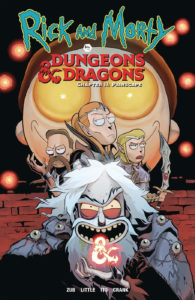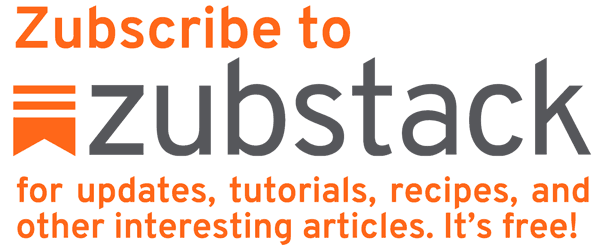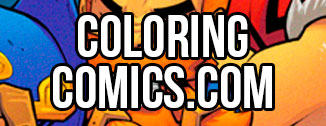In the previous parts of this tutorial series, I’ve covered brainstorming, story pacing, page planning and scripting. I wanted to get down some of my thoughts on dialogue before I wrap it all up.
Dialogue writing is a unique challenge. In a medium like comics where you rarely have the luxury of using prose to paint a scene, dialogue becomes even more important. The art in a comic makes up a large part of the storytelling experience and the dialogue/narrative text needs to work well with the visuals to create a cohesive collaboration. When dialogue is used properly (and lettered well, but that’s another topic) the comic flows, moving the reader confidently through the story.
As I mentioned in my previous post, dialogue is the only text from the script the reader sees on the finished comic page. Getting character dialogue to sound ‘right’ and inform at the same time is crucial.
How a character speaks tells a reader a lot about their personality, attitude, and motivation. When I describe a scene to the artist in my script, I make sure they’re aware of the character’s attitude and purpose. In short, what they’re doing and why. That way the posing/body language they use fits well with the attitude I want to see coupled with the dialogue I’ve chosen.
Then, the tough part – scripting speech. It’s like acting except I’m playing out the scene in my head, imagining what the character would say in this situation. Remember that characters aren’t necessarily going to spout their motivations aloud. Personality, speech and action all work together to create an interesting and memorable cast. Secrets being kept, confidence, innuendo, sarcasm, wordplay and some times what characters don’t say at all can help communicate different traits.
My first pass is usually long and rambling, pouring out information I think I need to get across. Unless I’m on a roll and really ‘in-character’ the first version I come up with is usually cold and lifeless. Here’s an example, just off the top of my head:
CHARACTER
If we don’t get out of here by midnight, we’re going to die.
There’s nothing grammatically wrong with that line, but it’s boring. It may be relevant information to a scene I’m writing, but it sounds really generic. It could be attributed to any character in the scene and wouldn’t sound any better or worse. What I try to do is tailor that line to a specific character in the scene and have them say it in a way that accentuates who they are.
If the dwarf from Skullkickers said that same line, it might go:
DWARF
If we’re nae high-tailed ‘ere by peak o’ the moon, we’re as
good as corpsed.
It’s the same information, but spoken in a way that feels far more fitting for the dwarf, filled with his particular cadence and personality.
If an occult genius were relaying the same information it could go:
GENIUS
If we cannot escape by the witching hour, I fear we may not
live to see dawn’s light.
Or a neurotic teenager:
TEEN
We’ve gotta get out before midnight, guys. If we stay...
we’re dead meat.
Or the punk protagonist from an M-rated comic series:
PUNK WITH TOURETTES
If we don’t get the fuck out of here before midnight,
we’re full-on fucked.
I get into character, try different versions and, most importantly, I say them out loud. The best way to test if the dialogue I’ve written ‘sounds’ right is for me to hear it! Some lines are subtle, others are ridiculous and ham-fisted, it really depends on the character I’m writing. I imagine the scene and speak the dialogue aloud, feeling through whether it flows and properly punctuates the panel I’m working on. Sometimes I’ll find a great line that doesn’t fit in that spot, so I cut and paste it into a separate scrap text file so I can look for a good place to put it later on.
Unless the character I’m writing is known for being overly verbose, I trim fat from the dialogue I write. I try shorter, punchier versions of lines to see if I can get the same information and personality across with less dialogue. When I read a comic that has gigantic word balloons filled to the brim, my eyes tend to gloss over them. I feel like the text is choking the life from the artwork. I want the artist to have room to let loose and strut their stuff. If I have a really dialogue/text heavy page I make sure it’s an absolute necessity for the story. Comics are a visual medium, so if there’s a way I can amp up the visuals instead of info-dumping, I’ll do that instead. When a lot of text is unavoidable, I let the artist know in the script that this section is writing-centric, a quick warning so they can plan their page rough accordingly to give me extra space.
One of the things Skullkickers has given me lots of practice with is writing dialogue for action scenes. I’ve become a bit of a stickler for combat chatter. For me it’s got to be direct and (forgive the pun) punchy. When I read comics where a character spouts five rambling lines of dialogue in mid-air and another three lines as they get punched, I kind of lose my mind. I want my action scenes to feel tense and quick, punctuated with dialogue rather than overwhelmed by it. Occasionally a character can say something mid-attack, but even then it’s going to be short and sweet. I space the talking out over multiple panels so the action keeps moving or avoid acrobatic soliloquies altogether.
Format-wise, I use underlined words in my scripts to indicate that a word should be bold in the final lettering. I use full caps to indicate that it should be a larger font and bold. These indicators help give the dialogue a clear rhythm so the reader knows where to put emphasis while they read.
So the line:
DRIVER
We’re leaving, Rachel. Get in the truck and don’t say a word.
Could be written as:
DRIVER
We’re leaving, Rachel. Get in the truck and don’t say a word.
With the words “leaving” and “word” stressed by the speaker, or:
DRIVER
We’re leaving, Rachel. Get in the truck and don’t say a word.
And this time “Get”, “truck” and “don’t” are given more weight. Say both versions aloud, emphasizing the underlined words, and you’ll feel the difference.
Don’t forget ellipses. They’re an easy way to indicate pauses, slowing down the rhythm of the speech.
DRIVER
We’re... leaving, Rachel. Get in the truck ...and don’t say
a word.
With those ellipses in there it gives a sense that the driver was making his decision after he already started talking. He paused to think about it and then stressed “leaving” to finalize the choice being made. The second set of ellipses creates another pause, like he’s finished his thought about Rachel going to the truck and then remembered to tell her to be quiet. The ellipses change the mood and rhythm of the line quite a bit. The driver here sounds less confident, a bit more shaken, even though the words being used are the same.
Another trick I’ll use is quick italicized descriptions under the character name to let the letterer and artist know how a character feels or where they are in the scene if that’s important. Here’s a quick example, using everything I’ve shown above, all coming together to create a panel with distinctive character dialogue and directions for the artist and letterer.
Panel 3
Driver looks unimpressed as he watches the drunk stumble around off panel.
DRIVER
Don’t you think you sh-
DRUNK
(interrupts Driver, off panel
shaky balloon with uneven text)
Yu think yu kin order me ‘round ‘ere? FUKOFF, yu! ...I'll
...I’ll tell yu shitall!
The panel description is short and clear, stressing that the focus here is the driver’s reaction to what he’s seeing, not the drunk. The drunk’s strange and improper dialogue denotes his emotional state and motivation, using bold words and ellipses to showcase the inebriated rhythm.
Keep dialogue clear, use it to enhance the story and make it character-centric. That’s the technique that’s worked for me.
I hope you’ve found these comic writing ramblings useful. As I stated in earlier posts, this isn’t any kind of absolute-must-follow method, just the way I work and a few tips. If you found these posts helpful, feel free to let me know here (or on Twitter), share the posts with your friends and consider buying some of my comics to show your support.
Also, let me know if you have any questions about the process. I’m thinking of putting together future posts about story pitching if there’s enough interest from people reading along here.
—
PS: Mom, if you’re reading this blog post – sorry for all the swearing up there. I love ya. 😛





 Zub on Amazon
Zub on Amazon Zub on Instagram
Zub on Instagram Zub on Twitter
Zub on Twitter
Thanks for sharing your process with us. Hopefully it will help me with the script I’m writing. Keep up the great work on Skull Kickers! I can’t wait for the next issue!
Another great post Jim. I was especially looking forward to this one about dialogue.
I like the punk with tourettes bit lol.
I have subscribed to your RSS feed so I look forward to all updates!
Yes, pitching advice, yes!
Lovin’ the posts.
second.
This was great Jim! Very insightful, and helpful. Thanks for making time from your busy scheduel to post these up, you’re the man! 😀
Thank you sir for putting in the time to put this together.